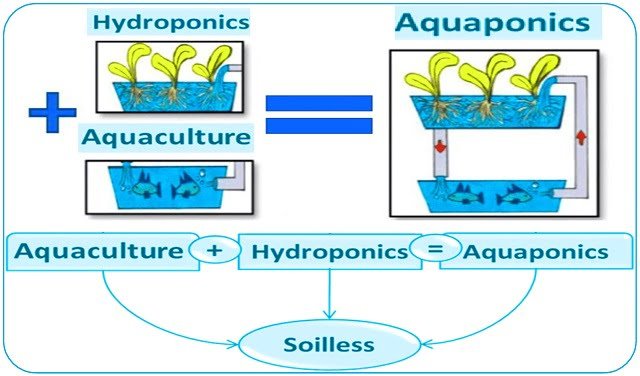When certain types of algae accumulate at the ocean surface in high numbers, they turn large swaths of water a reddish-brown color, attracting attention for both good and bad reasons.
Off the coast of Southern California these events, known as “red tides,” can produce awe-inspiring nighttime light shows by illuminating breaking waves and creating eerie blue trails behind surf fish. However, in other areas such as off Florida and in the the Great Lakes these blooms can be toxic, causing fish die-offs, shellfish poisoning, and triggering respiratory problems in humans and marine mammals.
For over a century, scientists have been trying to understand what causes red tides to form in coastal areas seemingly out of nowhere. Using a novel technique developed by Scripps Institution of Oceanography at the University of California San Diego scientist George Sugihara and colleagues, that mystery is finally being unraveled.
A student-led Scripps research team analyzed data on the primary pigment in algae—chlorophyll-a—as well as nutrient concentrations and various physical aspects of the ocean collected off Scripps Pier as part of a continuous observation program, led by Scripps Emeritus Professor John McGowan, that is part of the Scripps Shore Stations Program.
When the ecological data were fed into Sugihara’s equation-free models, known as empirical dynamic modeling (EDM), the researchers were able to identify patterns in the apparent randomness that can be used to predict red tides off Southern California.
The new study, to be published in the journal Ecology and available online, found that red tides are not purely random. It offers opportunities to predict these harmful algal blooms that could not be forecast using traditional ecological modeling methods.
Stay Always Informed
Join our communities to instantly receive the most important news, reports, and analysis from the aquaculture industry.
“Red tides were a mystery for so many years because we were looking at the ecosystem as if it was in equilibrium and unchanging and therefore could be studied a piece at a time,” said Sugihara, the McQuown Chair Distinguished Professor of Natural Science and a senior author on the study. “It was a mystery only because we were looking at it the wrong way. Looking for things that simply ‘correlate’ with red tides will fail.”
The EDM method is based on the idea that the ecosystem is always changing and must be studied as a whole system rather than as separate pieces. Analyzing the ecosystems holistically enabled Sugihara and his team to use the 30-year archive of field data to identify the mechanisms causing red tides.
“Even with vast improvements in ‘ecosystem forecasting’ over the past few decades, it remains a major challenge for scientists,” said Alan Tessier, deputy director of the National Science Foundation’s (NSF) Division of Environmental Biology. “This research shows that the challenge is being overcome using innovative techniques that offer us information such as how to predict red tides. That’s important for knowing when to close fisheries and swimming areas, and for the health of residents who live along affected waters.”
“The approach allowed us to find factors that come together as a perfect storm to produce a red tide,” said Sugihara. “These factors include having a stable water column and low nutrient levels in surface waters.”
With further model improvements to incorporate real-time observations, Sugihara and team believe that these algal blooms could be predicted as part of an early-warning system for future red-tide events.
In addition to the public health concerns, these algal blooms cause operational issues at power and desalinization plants, and create oxygen-depleted zones in the ocean. Advanced prediction of red tides can help provide more proactive responses to the human and animal health repercussions, guide temporary shutdowns of desalinization plants, and aid in the planning of military training exercise in coastal waters.
“This research would not have been possible without time-series observations of phytoplankton to validate modeling efforts,” said David Garrison, director of NSF’s biological oceanography program. “The results are important for addressing societal problems such as harmful algal blooms in coastal waters.”
In addition to Sugihara and McGowan, other researchers involved in this work include: former Scripps graduate students Ethan Deyle, Hao Ye, Charles Perretti, Kerri Seger, and Alain de Verneil; and Scripps researchers Melissa Carter and Mary Hilbern.
Now in its 100th year, the Shore Stations Program at Scripps Pier is one of the oldest continuous monitoring programs of ocean temperature and salinity in the world. The sampling program began recording chlorophyll-a measurements in 1983.
Funding for this study was provided by the Department of Defense Strategic Environmental Research Program, Lenfest Ocean Program, National Science Foundation, EPA-STAR fellowship program, and the Sea Grant Population Dynamics Fellowship. NSF and the MacArthur Foundation provided partial funding for the station data collection program.
Reference:
McGowan, J. A., Deyle, E. R., Ye, H., Carter, M. L., Perretti, C. T., Seger, K. D., de Verneil, A. and Sugihara, G. (2017), Predicting Coastal Algal Blooms in Southern California. Ecology. Accepted Author Manuscript. doi:10.1002/ecy.1804
http://onlinelibrary.wiley.com/doi/10.1002/ecy.1804/full
Contact:
George Sugihara
CASPO
Scripps Institution of Oceanography
UC San Diego
9500 Gilman Drive #0202
La Jolla CA, 92093-0202
Location: Hubbs Hall 2120
Tel: 858-534-5582
gsugihara at ucsd.edu
Source: UCSD
Editor at the digital magazine AquaHoy. He holds a degree in Aquaculture Biology from the National University of Santa (UNS) and a Master’s degree in Science and Innovation Management from the Polytechnic University of Valencia, with postgraduate diplomas in Business Innovation and Innovation Management. He possesses extensive experience in the aquaculture and fisheries sector, having led the Fisheries Innovation Unit of the National Program for Innovation in Fisheries and Aquaculture (PNIPA). He has served as a senior consultant in technology watch, an innovation project formulator and advisor, and a lecturer at UNS. He is a member of the Peruvian College of Biologists and was recognized by the World Aquaculture Society (WAS) in 2016 for his contribution to aquaculture.




